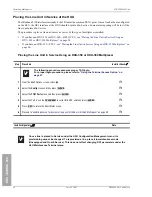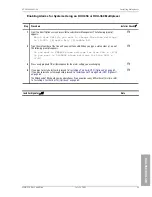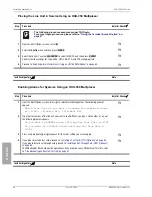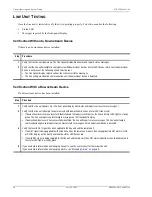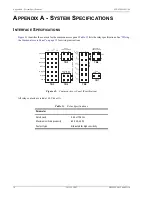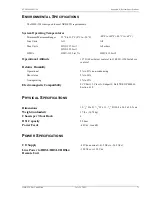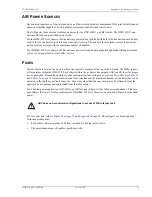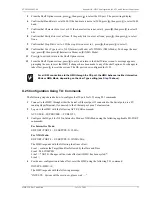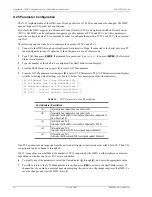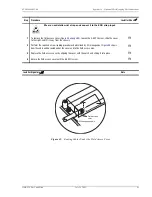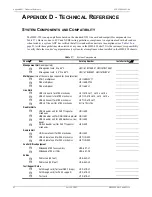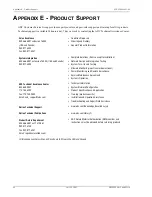
LTPH-SM-1052-04
HMS-358 List 5 and List 6
July 14, 2002
69
S
UBNET
M
ASK
A subnet is a physically separate part of a network, usually representative of all the devices at one geographic
location or on the same LAN. The subnet mask is a quantity which is logically ANDed with an IP address to enable
a device to determine which IP addresses are located on the local network and which addresses must go to the
gateway for forwarding. An IP address of 200.200.200.1 and a subnet mask of 255.255.255.0, for example,
indicate that only IP addresses, which start with 200.200.200, can be found on the local physical network, and that
all other addresses must go through the gateway. (255 is the decimal representation of 8 bits of all ones.)
The subnet mask is also a 32-bit word, but it is generally a string of ones followed by a string of zeroes. Each
subnet bit that has a one value identifies a corresponding bit of the IP address that is part of the netid. The zero
bits identify the hostid. The netid is further divided into five classes from A to E.
shows a Class C
network address. Class C is recommended for most HMS-358 applications. All Class C addresses are identified
by the first three bits (110). The hostid should not be assigned all ones or all zeroes.
Using the foregoing restrictions and conventions, an HMS-358 can be assigned any IP address that meets your
needs, provided that it is on its own LAN and separated from any external network by a router. If this is not the
case, then consult your system administrator.
provides some suggestions for addressing your system if
it is on its own LAN. It shows a logical relationship between the HMU in chassis #1 and the HMU in chassis #32.
R
OUTERS
OR
G
ATEWAYS
At the place where two or more physical networks interconnect is a device called a gateway or router that handles
linking of networks and routing of data packets between the networks that are attached to the gateway. If a device
cannot find the hardware address associated with a particular IP address on its own local network, it sends the
packet on to the gateway. When the packet arrives at the gateway, the gateway transfers the packet to the network
of the destination device. The process by which the gateway or router links IP addresses to hardware addresses is
called Address Resolution Protocol (ARP). Each forwarding of the packet from one device to another is called a
hop. If the device that is to receive the data is not directly connected to any of the physical networks, which are
connected to the gateway used by the sending device, it may take several hops for the packet to reach its
destination. The destination may even be a port on another gateway connected to different physical networks.
Table 12.
Sample Class C IP Address Plan for the HMS-358
Suggested HMU Addressing for 1 to 32 Chassis
11001000 11001000 11001000 00000001
200.200.200.1 HMU chassis #1
255.255.255.0 Subnet mask
11001000 11001000 11001000 00100000
200.200.200.32 HMU chassis #32
255.255.255.0 Subnet mask




